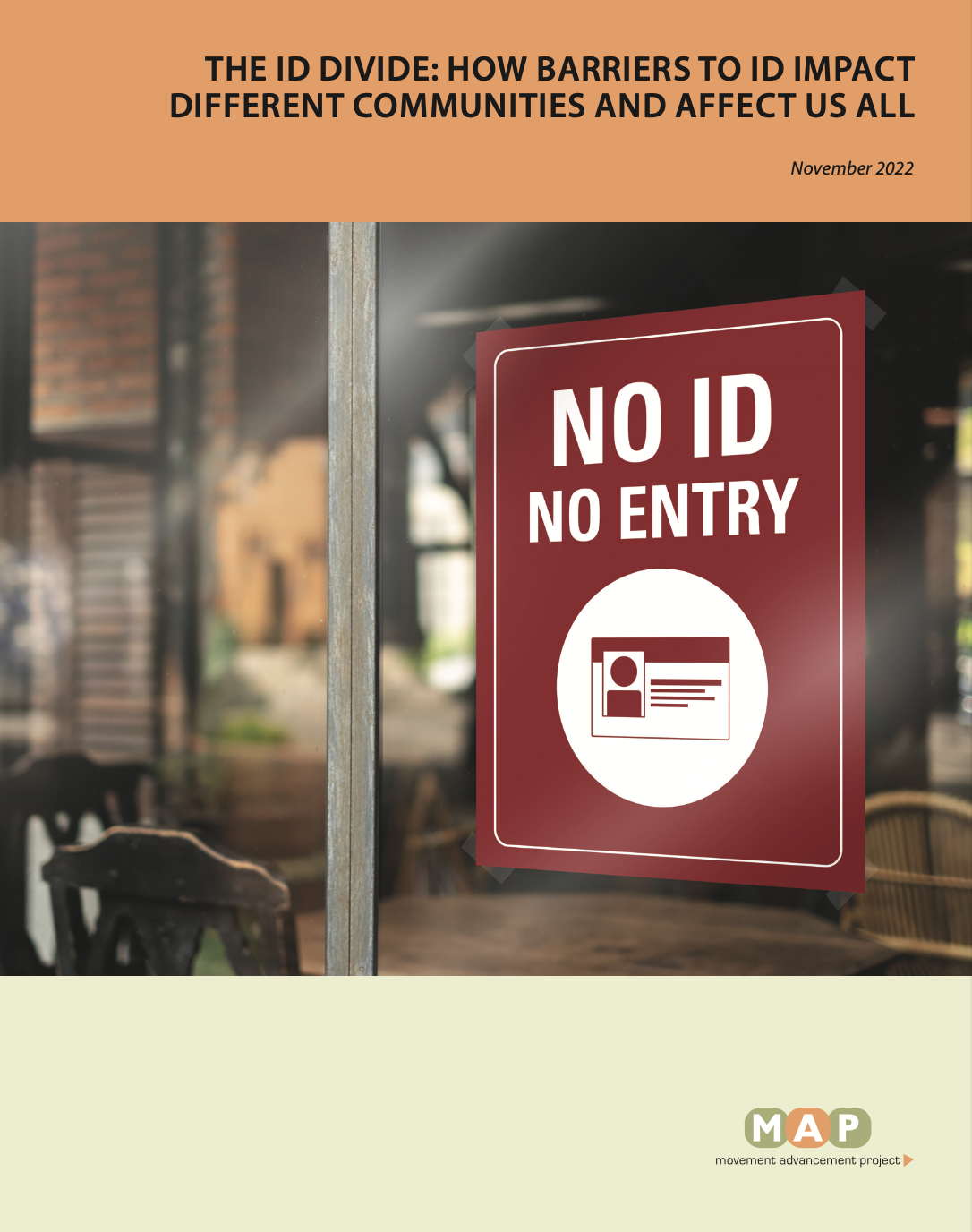Identity documents (IDs) like driver’s licenses are keys that unlock virtually every aspect of daily life, but there are many barriers to obtaining ID, affecting everyone but impacting different communities in different ways. A complicated patchwork of policies, combined with unnecessarily high fees and ongoing discrimination, means that millions of people are unable to access some of the most basic needs and services or to participate in everyday life, simply because they don’t have a valid ID. Click on the links and see below for additional details.Report Figures and Infographics Download Brief: How Barriers to ID Impact Different Communities and Restrict DemocracyRead more Fact Sheet: Transgender People [Updated March 2025]Download Fact Sheet: Indigenous and Native CommunitiesDownload Fact Sheet: Immigrant CommunitiesDownload Fact Sheet: Low-income CommunitiesDownload Fact Sheet: People Experiencing Housing Insecurity or HomelessnessDownload Fact Sheet: Formerly Incarcerated PeopleDownload Works Cited: Community Fact SheetsDownload
The ID Divide: How Barriers to ID Impact Different Communities and Affect Everyone, is a robust cross-population analysis and recommends systemic solutions to remove barriers and improve access to IDs. The report details the ways that barriers to obtaining an accurate ID significantly impact people’s ability to move through their daily lives and how these obstacles harm specific communities. This report illustrates clear, achievable ID policies that promote public safety and good governance while still ensuring that people can have their basic needs met and have an equal opportunity to participate in civic and everyday life. Key items in the report:- Overall, roughly one in eight adults in this country—nearly 30 million people—lack a valid driver’s license, one of the most common forms of ID.
- An estimated 15-18 million adults in the United States—more than the total population of Pennsylvania—do not have access to documents proving their birth or citizenship, which are often necessary to obtain an ID.
- While roughly 12% of U.S. adults nationwide lack a valid driver’s license, this varies widely across communities: an estimated 21% of Black adults, 23% of Hispanic adults, and 68% of transgender people don’t have a valid, accurate driver’s license.
Case studies: The report also includes case studies of how barriers to ID cause harm. For example: - During the lead water crisis in Flint, Michigan, residents without photo ID were initially unable to pick up water and filtration supplies supplied by the state.
- When states required an ID or proof of residency to receive COVID-19 tests or the vaccine, it endangered the health of both individuals without ID as well as the broader community around them.
Overlapping barriers to getting and updating ID include: - Complicated and circular documentation requirements
- Needlessly expensive fees
- Limited availability of ID services
- Confusing patchwork of state policies
- Discrimination
Recommendations: The ID Divide offers recommendations to reduce obstacles to ID and improve access for everyone. An overarching recommendation is for policymakers to carefully determine when an ID is truly necessary and when requiring it might limit access to basic needs and essential services. A detailed set of recommendations for policymakers include ways to: - Simplify documentation requirements and processes
- Reduce the needlessly expensive costs of obtaining and updating IDs
- Increase access to ID services and IDs themselves
- Set nationwide standards for ID accessibility for all
- Reduce discrimination in ID policies and administration
Recommended citation format:
Movement Advancement Project. November 2022.
The ID Divide: How Barriers to ID Impact Different Communities and Affect Us All.
https://www.mapresearch.org/id-documents-report.


